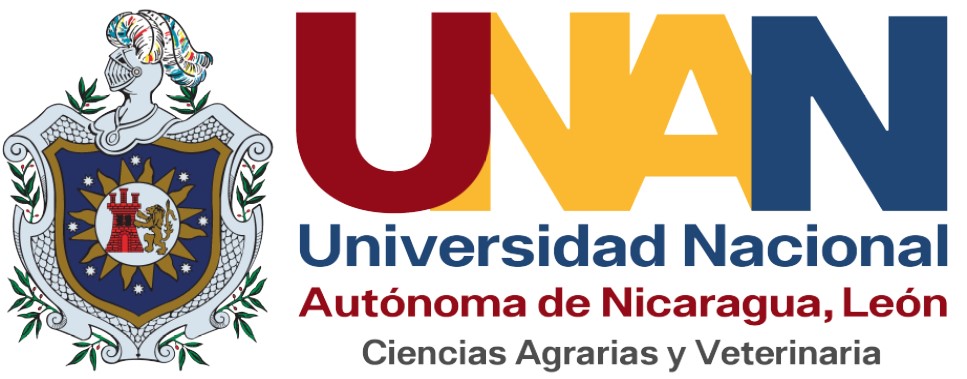Measuring the exposure of climate change in Mesoamerican cities
DOI:
https://doi.org/10.5377/ribcc.v6i11.9732Keywords:
Precipitation, Tempeture, Urban area, MesoamericaAbstract
The present investigation analyzes the volatility of precipitation and temperature in Mesoamerican cities generated by climate change, using as a baseline the dynamics of the two observed climatic variables month by month; between 1971 to 1980 and 2001 to 2010, comparing them with future climate scenarios for the years 2061 to 2070. The Mesoamerican cities used in the analysis include the capital cities of the states of the Mexican southeast, Guatemala, El Salvador, Honduras, and Belize. Measuring climatic variables' volatility allows us to qualify if the distribution of rainfall and temperature is above or below the average ranges of the historical distribution of these variables. Understanding climate volatility provides a glimpse of a series of technical and political scenarios and generates concrete actions in the face of changes in long-term climate dynamics. Thus, it anticipates the effects of extreme climate events present in a region. The method empowers decision-making in public policy, particularly in urban areas where the tendency to dry and hot climates generate a series of consequences. Some consequences are i) the need to diversify drinking water sources and hydroelectric generation, ii) the effects of heat spells on the quality of life of the population, iii) the quality of sleep and productivity, and ultimately iv ) consumption of energy levels for air conditioning or refrigeration higher than current levels.Downloads
Metrics
References
Hardoy, J., & Lankao, P. R. (2011). Latin American cities and climate change: challenges and options to mitigation and adaptation responses. Current Opinion in Environmental Sustainability, 158-163. https://doi.org/10.1016/j.cosust.2011.01.004
Heard, C. L., & Olivera, S. M. (2013). Evaluación económica de la resistencia térmica de la vivienda de interés social en las ciudades tropicales de México. . Acta Universitaria, 17-29. https://doi.org/10.15174/au.2013.458
Instituto Mexicano de Competitividad. (6 de enero de 2020). https://imco.org.mx/. Obtenido de https://imco.org.mx/wp-content/uploads/2012/7/boletindeprensa_ivc_final.pdf
Olivera, S. (2019). La administración del riesgo como instrumento de desarrollo. La Paz: Banco Mundial.
Ruiz, J. (2014). Geometría analítica. Mexico: Grupo Editorial Patria.
Satterthwaite, D. (2009). The implications of population growth and urbanization for climate change. Environment and Urbanization, 545-567. https://doi.org/10.1177/0956247809344361
Climate Vulnerability Monitor 2nd Edition. (6 de enero de 2012). www.daraint.org/cvm2/method. Obtenido de www.daraint.org www.daraint.org/cvm2/method
DARA. (2012). Climate Vulnerability monitor-A guide to the cold calculus of a hot planet. Madrid, Spain.: Climate Vulnerable Forum.
Figlewski, S. (1997). Forecasting volatility. Financial markets, institutions & instruments, 1-88. https://doi.org/10.1111/1468-0416.00009
IPCC. (2011). special report on renewable energy sources and climate change mitigation. Geneve: IPCC.
Loa, J., Cabos, W., Álvarez García, F., & Ruiz de Elvira, A. &. (2006). . Análisis preliminar de la volatilidad de extremos de precipitación en la Península Ibérica. https://repositorio.aemet.es/.
Martinez Gonzalez, C. A. (2015). Percepción pública del cambio climático en México. Universidad Iberoamericana Ciudad de México. Departamento de Comunicación.
Oglesby, R., Rowe, C., Grunwaldt, A., Ferreira, I., Ruiz, F., Campbell, J., & Lopez, P. (2016). A high-resolution modeling strategy to assess impacts of climate change for Mesoamerica and the Caribbean. American Journal of Climate Change, 202-2. https://doi.org/10.4236/ajcc.2016.52019
Olivera, S. M. (2017). Opciones de política para transitar hacia una senda de desarrollo baja en carbono: México. Sucre: USFXC.
REGIONAL CLIMATE CHANGE CONSORTIUMFOR LATIN AMERICA AND THE CARIBBEAN. (25 de marzo de 2020). http://rccdp.unl.edu/portal/old/data/DataDownload.html. Obtenido de http://rccdp.unl.edu/portal/old/data/DataDownload.html: http://rccdp.unl.edu/portal/old/data/DataDownload.html
Downloads
Published
How to Cite
License
Copyright (c) 2020 Ibero-american JournalL of Bioeconomy and Climate Change e-ISSN 2410-7980

This work is licensed under a Creative Commons Attribution-NonCommercial-ShareAlike 4.0 International License.
Copyright © 2025 Rev. iberoam. bioecon. climate change. National Autonomous University of Nicaragua León (UNAN-León), Knowledge Area of Agrarian and Veterinary Sciences / Specific Area of Agroecology and Agribusiness / Center for Research in Agrarian Sciencies. Academic Directorate. Research Department. Publication and scientific events Unit.












 EDITORIAL
EDITORIAL e-ISSN
e-ISSN


 COPYRIGHT
COPYRIGHT This work is licensed under a Licencia Internacional
This work is licensed under a Licencia Internacional 












